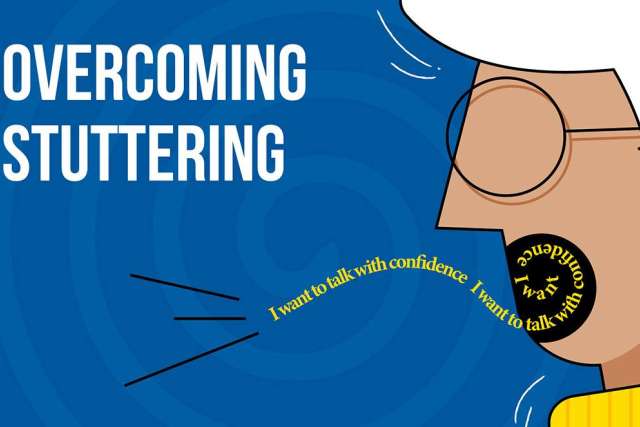
Presidential candidate Joe Biden has been open about his lifelong struggle with stuttering.
“It’s a debilitating situation,” Biden said at a . “And I still occasionally, when I find myself really tired, catch myself (stuttering).”
Biden is hardly alone. According to the National Institute on Deafness and Other Communication Disorders, roughly 3 million people in the United States stutter. , sponsored by the nonprofit National Stuttering Association, which falls on Oct. 22, aims to draw attention to the condition and provide hope to people who stutter.
Nicole Schussel, MS, CCC-SLP, a UCLA Health pediatric speech-language pathologist, works with children who stutter. She addresses common misconceptions about stuttering and talks about the latest treatment approaches.
What are some of the misconceptions about stuttering?
People think if you tell somebody to “just relax” or “slow down” or “think about what you want to say before you say it,” that this is somehow going to help them. But most patients are thinking about what they want to say. It’s an issue of being able to get it out fluently, or in a smooth way.
Joseph and Vivian Sheehan, who conducted pioneering research on stuttering at UCLA in the 1950s that led to breakthrough treatments still in use today, used an iceberg analogy to describe stuttering. Just a small percentage of an iceberg is visible from above the water; it’s the same with stuttering. There are many different types of stuttering, like blocking, where a person opens his or her mouth but a sound isn’t coming out; word repetitions; sound repetitions; and prolongations. Those stuttering behaviors and what we are able to observe on the surface are really just 10 to 15% of what stuttering really is. Below the surface, we may see fear, shame, guilt, anxiety, isolation, denial, hopelessness — all of the things that really impact and exacerbate stuttering.
When do stuttering behaviors typically surface?
We often see it starting at 3 to 4 years old. There’s some preschool-age stuttering that we expect. Children start to gain all of this new vocabulary, and they don’t really know what to do with it. They’re trying to figure out what order to put the words in while trying to keep their place in the conversation. The indicators that suggest this may not be typical preschool-age stuttering are if a parent observes that a high percentage of a child’s syllables are stuttered, or if they notice the child avoiding certain speaking opportunities or becoming frustrated with their own speech. Another tell-tale sign is what we call physical concomitants — physical behaviors that are associated with a stuttering moment, such as eye blinking or head nodding. Children don’t realize they’re doing it, and sometimes adults don’t realize they’re doing it, but it’s an attempt to get out of the stuttering moment.
What are risk factors for stuttering?
Stuttering is more common in males. There’s a genetic component; if you have a family member who stutters, that definitely is a risk factor. Children who begin stuttering before the age of 3½ are most likely to outgrow it, but if they start to stutter later, or if they’ve been stuttering for six to 12 months or longer, it’s likely they are at greater risk of continuing. There’s no real correlation between language skills or other speech-sound production disorders. However, children without these risk factors may still develop a stuttering disorder.
What treatments are there, and how do they differ for children and adults?
The treatment I primarily utilize is called the Lidcombe program. It’s best used for 4- to 6-year-old children, and it addresses stuttering in a more direct way. We’re not addressing the fear and anxiety below the surface of their stuttering because they’re still so young. This approach is more about clarifying what is smooth speech, what is bumpy speech, and it really is parent-driven. I’ve seen a lot of success with that program.
Once a child is school-age, we are working more on fluency-shaping: When I’m in a stuttering moment, how can I get out of it? The point isn’t always not to stutter. The point is to create less tension — less jaw tension, less throat and muscle tension — to stutter more freely and more easily. They may still stutter, but they’re not doing it in a way that is affecting how well other people can understand them or that is impeding their willingness to raise their hand to talk in class.
As they get older, we really focus more on the social-emotional aspects of stuttering. Adolescents and adults typically have much more fear, anxiety and shame attached to speaking events because they may have had bad experiences. They may have had people make fun of them. They’ve avoided ordering at restaurants or going for certain job opportunities because of how they feel they may be perceived.
A lot of people who stutter may never stop stuttering completely. They may just get better at hiding it, or they may develop their own tricks to avoid certain words or certain situations. This is called covert stuttering, and can often be exhausting for the person experiencing it.



